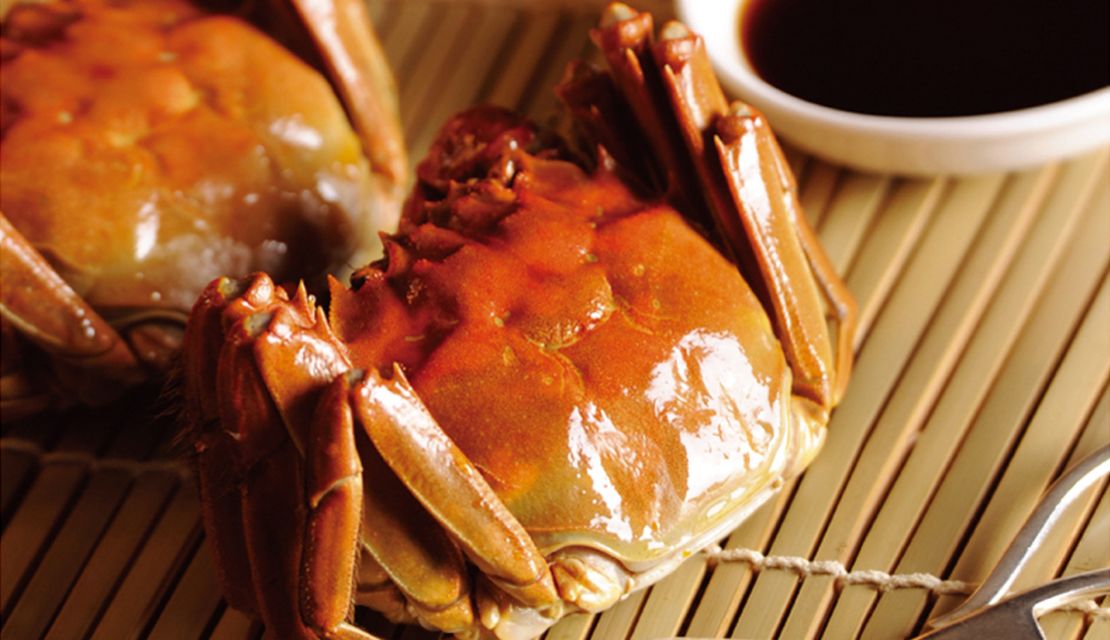Editor’s Note: CNN Travel’s series often carries sponsorship originating from the countries and regions we profile. However, CNN retains full editorial control over all of its reports. Read the policy.
The emperors may have left town, but the food in China’s ancient dynastic capital of Nanjing is still fit for royalty.
In a nation obsessed with food, the dishes served up here are among the most delicious and delectable.
Jiangsu Province – Nanjing is the capital – is home to one of the most influential cuisines in China.
Known for their exquisite presentation, Nanjing’s homegrown dishes provide some of the tastiest examples of Jiangsu cuisine.
Here are eight essential orders.
Salted duck
Nanjing is a city with duck fever – from marinated to roasted, from duck meat to duck blood.
As the local saying goes, “Without duck, it’s not a proper meal.”
Salted duck is a cold dish usually served as an appetizer or as a snack to accompany alcohol.
Plum Garden’s salted duck is marinated in a special brine that keeps the meat tender and imbues it with a slightly salty flavor.
Best at:
MORE: Around China in 31 dishes
Pan-fried beef dumplings
With its crispy wrapper, flavorful beef and onion filling and steaming soup, it’s no wonder niu rou guo tie (pan-fried beef dumplings) are the pride of Nanjing.
Pan-fried beef dumplings are considered one of Nanjing’s eight traditional Qinhuai treasures, as designated by government-sanctioned experts in 1987.
The original dumpling named as a Qinhuai treasure comes from Jiang You Ji restaurant, which can still be found in an alley in Nanjing’s Confucius Temple area.
Liji Halal Restaurant is another popular local choice for the dumplings.
For the complete experience, pan-fried beef dumplings should be accompanied by beef soup, or niu rou tang.
Best at:
Jiang You Ji, 313 Qin Hong Lu, Qin Huai District; +86 25 5262 2265
Tangbao (soup dumpling)

Who needs fries or chips when you can snack on these marvelous soup dumplings for a dollar or two?
The sight of chicken broth and pork wobbling inside a paper-thin wrapper – assuming a chopstick hasn’t accidentally pierced the tender skin – is sheer heaven for many locals.
The most famous place for the dish is Yinshi Jishi Tangbao restaurant, though the flavor can be too sweet for some.
If you prefer your dumplings more savory, Liu Changxing restaurant is recommended.
Best at:
Liu Changxing, 506 Zhongshan Dong Lu, Baixia District; +86 25 8441 1031
Sweet and sour Mandarin fish
Sweet and sour Mandarin fish is perhaps the quintessential example of Jinling cuisine (a subset of Jiangsu cuisine, typical of Nanjing).
The preparation requires delicate skill, and there’s an emphasis on appearance as well as taste.
The fish is de-boned and the flesh sliced in a grid pattern so that it fans out. The head and tail are left on.
It then goes in the wok. Ingredients such as shrimp, nuts and mushrooms are added to boiling sweet and sour sauce and poured over the fish, creating a squeaking sound.
The result is a plate of fish shaped like a squirrel, hence its common name, “squirrel fish.”
Best at:
Duck blood vermicelli soup
Yes, the soup is made of duck-blood curd and offal – but that doesn’t deter local connoisseurs.
It’s said that duck blood vermicelli soup was brought to Nanjing by a traveler from Auhui, a neighboring province.
But the dish has become a favorite Nanjinger cheap eat.
You can find duck blood vermicelli soup as easily in Nanjing as you can find kebab stands in Berlin.
Best at:
Yadebao, 11-12 Chaozhi Xiang, Baixia District; +86 25 8452 4820
Jinling roast duck
There’s a never-ending debate about where roast duck was invented – it’s called Peking duck in Beijing and Jinling duck in Nanjing.
According to one legend, Ming Dynasty emperor Zhu Di brought his favorite roasted-duck chefs with him from his Nanjing palace when he moved the capital to Beijing.
Though less celebrated internationally, Jinling duck is hardly inferior to its northern counterpart. Crisp and greasy duck skin with juicy and tender flesh is the standard formula of this satisfying dish.
Best at:
Chen Lin, 5-1 Diao Yu Tai (Near Zhonghua Gate)
MORE: City of emperors: Why Nanjing’s beauty still resonates in China
Hairy crab

Since 2001, the biggest event in Gaochun County in southern Nanjing has been the annual hairy crab festival.
This makes sense – about a third of the county’s area is occupied by Gucheng Lake, one of the country’s top breeding grounds for hairy crabs.
The crabs are meaty and sweet, with a paste inside that has a rich, buttery texture.
The best season for hairy crab is fall.
Chinese believe that the ninth month of the lunar calendar (usually mid-September) is the best time for female hairy crabs and the tenth month (mid-October) is best for male hairy crabs.
Best in:
Gaochun county in mid- to late September
Egg shaomai
It’s the most expensive shaomai in Nanjing, but it’s the best.
Ma Xiang Xing Halal restaurant reinvented the shaomai dumpling for a Chinese general who loved shaomai and loved shrimp.
Typical shaomai uses pork, fish or cheaper bits of shrimp – at Ma Xiang Xing Halal, fresh shrimp are made into a paste and wrapped in a thin dumpling made from egg.
These aren’t to be mistaken for the egg yolk shaomai sold on the ground floor in Ma Xiang Xing.
Best at:
READ: An architectural wonderland hidden in a Chinese forest











